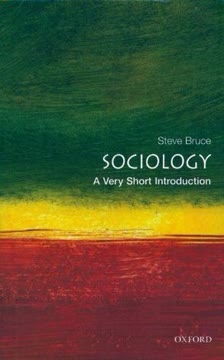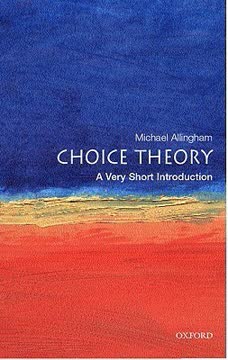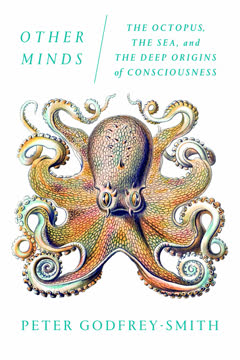Key Takeaways
1. Animals: A Diverse Kingdom United by Common Traits
To build an animal - One feature shared by all animals is that they are 'multicellular'. That is, their bodies are made of many specialized cells.
Defining characteristics. Animals are united by several key traits that distinguish them from other living organisms:
- Multicellularity: Bodies composed of numerous specialized cells
- Heterotrophy: Obtaining energy by consuming other organisms
- Mobility: Ability to move and sense their environment
- Specialized reproduction: Generation of distinct sperm and egg cells
- Epithelial cells: Flexible, waterproof cell sheets forming body structures
Evolutionary origin. The ancestor of all animals likely evolved from choanoflagellates, single-celled aquatic organisms that closely resemble the feeding cells of sponges. This transition from unicellular to multicellular life marked the birth of the Animal Kingdom, leading to an explosion of diversity over the past 600 million years.
2. The Evolutionary Tree of Animals: From Sponges to Humans
Biologists were astounded to find similarities that went far, far deeper – right down to the DNA.
Molecular revolution. The discovery of homeobox genes in the 1980s revolutionized our understanding of animal evolution and development. These genes, found across diverse animal phyla, control body patterning and are remarkably conserved:
- Hox genes: Determine position along the head-to-tail axis
- Dorsal-ventral patterning genes: Control top-bottom orientation
- Left-right axis genes: Establish bilateral symmetry
Major animal groups. The animal kingdom is divided into several major groups based on evolutionary relationships:
- Non-bilaterians: Sponges, cnidarians, ctenophores, and placozoans
- Bilaterians:
- Protostomes: Lophotrochozoa and Ecdysozoa
- Deuterostomes: Echinoderms, hemichordates, and chordates (including vertebrates)
This evolutionary tree, supported by both molecular and morphological evidence, provides a framework for understanding the diversity and relationships among animal groups.
3. Bilateral Symmetry: The Game-Changer in Animal Evolution
The bilaterians truly explore and exploit the world in three dimensions.
Advantages of bilaterality. The evolution of bilateral symmetry marked a significant leap in animal complexity and capabilities:
- Defined body axes: Anterior-posterior, dorsal-ventral, and left-right
- Cephalization: Concentration of sensory organs and nervous tissue at the anterior end
- Directed movement: Efficient locomotion and active exploration of the environment
- Enhanced internal organization: Development of complex organ systems
Developmental toolkit. Bilateral animals share a common set of genes that control body patterning and development. This "developmental toolkit" includes:
- Hox genes: Determine anterior-posterior patterning
- BMP and Chordin: Control dorsal-ventral axis formation
- Nodal and Pitx: Establish left-right asymmetry
The conservation of these genes across diverse animal phyla highlights the fundamental unity underlying the apparent diversity of animal body plans.
4. Lophotrochozoa: Worms, Mollusks, and Their Surprising Diversity
The Annelids divide into four groups.
Diverse body plans. The Lophotrochozoa superphylum encompasses a wide range of animal phyla, including:
- Annelida: Segmented worms (earthworms, leeches, polychaetes)
- Mollusca: Soft-bodied animals with shells (snails, clams, octopuses)
- Platyhelminthes: Flatworms
- Nemertea: Ribbon worms
- Bryozoa: Moss animals
Ecological importance. Many lophotrochozoan animals play crucial roles in ecosystems:
- Earthworms: Soil aeration and nutrient cycling
- Mollusks: Important food sources and ecosystem engineers
- Parasitic flatworms: Significant impact on human and animal health
The diversity of body plans and ecological roles within Lophotrochozoa highlights the adaptability and evolutionary success of this group.
5. Ecdysozoa: Insects, Nematodes, and the Masters of Molting
To a good approximation, all species are insects.
Dominant terrestrial invertebrates. Insects, the most diverse group of animals, have achieved unparalleled success on land due to several key adaptations:
- Exoskeleton: Provides support and protection
- Tracheal system: Efficient gas exchange without lungs
- Wings: Enabled conquest of aerial habitats
- Metamorphosis: Allows exploitation of different niches at different life stages
Diverse ecdysozoans. The Ecdysozoa superphylum includes other important groups:
- Nematodes: Roundworms, abundant in soil and as parasites
- Arthropods: Insects, crustaceans, arachnids, and myriapods
- Tardigrades: Microscopic "water bears" known for extreme resilience
Ecdysozoans are united by their ability to molt, shedding their exoskeleton to grow. This trait has allowed them to diversify and adapt to a wide range of environments.
6. Deuterostomes: The Rise of Vertebrates and Complex Body Plans
The distinctions between bilaterians, or triploblasts as they are also known, and the more 'basal' animal phyla have been noted for over a century.
Diverse deuterostomes. The deuterostome superphylum includes three main groups:
- Echinoderms: Starfish, sea urchins, and sea cucumbers
- Hemichordates: Acorn worms and pterobranchs
- Chordates: Vertebrates, tunicates, and amphioxus
Vertebrate innovations. Vertebrates have developed several key adaptations that set them apart:
- Backbone: Provides support for larger body sizes
- Closed circulatory system: Efficient oxygen and nutrient transport
- Complex brain and sensory organs: Enhanced information processing
- Neural crest cells: Enable development of complex skull and facial structures
These innovations have allowed vertebrates to become dominant in many terrestrial and aquatic ecosystems, despite representing only a small fraction of animal diversity.
7. From Water to Land: The Evolutionary Journey of Tetrapods
The single evolutionary lineage of vertebrates that overcame the challenges of living on dry land gave rise to all of the land vertebrates still living today: all amphibians, all reptiles, all birds, and all mammals.
Key adaptations. The transition from aquatic to terrestrial life required several crucial adaptations:
- Robust limbs: For support and locomotion on land
- Lungs: For efficient gas exchange in air
- Water-conserving skin: To prevent desiccation
- Amniotic egg: Allows reproduction away from water (in reptiles, birds, and mammals)
Evolutionary stages. Fossil evidence reveals the gradual evolution of tetrapods:
- Tiktaalik: Fish-like creature with primitive limbs
- Acanthostega: Early tetrapod with digits but still aquatic
- Ichthyostega: More terrestrially adapted with stronger limbs and spine
This transition represents one of the most significant events in vertebrate evolution, opening up new ecological niches and driving further diversification.
8. Mammals and Birds: Warm-Blooded Marvels of Adaptation
The active lifestyle of birds is only possible because of their relatively warm body temperature, generated by a high metabolic rate coupled with the insulation provided by feathers.
Endothermy advantages. Both mammals and birds have independently evolved endothermy (warm-bloodedness), providing several benefits:
- Constant body temperature: Allows activity in various environments
- High metabolic rate: Enables sustained activity and complex behaviors
- Parental care: Supports extended development of offspring
Unique adaptations. Mammals and birds have developed distinct features:
Mammals:
- Hair: Insulation and sensory function
- Milk production: Nourishment for offspring
- Complex teeth: Enables diverse feeding strategies
Birds:
- Feathers: Flight, insulation, and display
- Hollow bones: Reduces weight for flight
- Air sac system: Highly efficient respiration
These adaptations have allowed mammals and birds to become dominant vertebrates in terrestrial ecosystems, occupying a wide range of niches.
9. The Human Place in the Animal Kingdom: A Humble Perspective
Standing back and looking at our own place in the evolutionary tree of animals, humans represent but a tiny twig.
Evolutionary context. Humans are just one species among millions in the animal kingdom, nestled within a series of increasingly inclusive groups:
- Primates
- Mammals
- Tetrapods
- Vertebrates
- Chordates
- Deuterostomes
- Bilaterians
- Animals
Unique features. While humans possess several distinctive traits, many of our characteristics are shared with other animals:
- Large brain: Enhanced cognitive abilities, but similar structure to other mammals
- Bipedalism: Frees hands for tool use, but not unique among primates
- Complex social behavior: Shared with many other species
- Language: Highly developed, but communication is common throughout the animal kingdom
Understanding our place in the animal kingdom provides both humility and a sense of connection to the vast diversity of life on Earth. It emphasizes the importance of conservation efforts to protect not just our own species, but the entire web of life of which we are a part.
Last updated:
FAQ
What's "The Animal Kingdom: A Very Short Introduction" about?
- Overview: "The Animal Kingdom: A Very Short Introduction" by Peter Holland provides a concise exploration of the diversity and complexity of animal life on Earth.
- Content Focus: The book delves into the classification of animals, their evolutionary history, and the unique characteristics that define different animal phyla.
- Educational Purpose: It aims to offer readers a foundational understanding of zoology and the evolutionary relationships among various animal groups.
- Target Audience: This introduction is suitable for anyone interested in biology, evolution, or the natural world, providing a gateway to more detailed studies.
Why should I read "The Animal Kingdom: A Very Short Introduction"?
- Comprehensive Overview: The book offers a broad yet detailed overview of the animal kingdom, making it an excellent starting point for understanding animal diversity.
- Expert Insight: Written by Peter Holland, a respected zoologist, it provides authoritative insights into the evolutionary history and classification of animals.
- Accessible Language: The book is designed to be accessible to non-specialists, making complex scientific concepts understandable to a general audience.
- Foundation for Further Study: It serves as a stepping stone for those interested in delving deeper into zoology or related fields.
What are the key takeaways of "The Animal Kingdom: A Very Short Introduction"?
- Animal Classification: Understanding the classification of animals into phyla based on evolutionary relationships and morphological characteristics.
- Evolutionary Insights: Insights into the evolutionary history of animals, including the development of complex body structures and systems.
- Diversity of Life: Recognition of the vast diversity within the animal kingdom, from simple sponges to complex vertebrates.
- Scientific Methodology: Appreciation for the methods used in modern zoology, including molecular phylogenetics and comparative anatomy.
What are the best quotes from "The Animal Kingdom: A Very Short Introduction" and what do they mean?
- "Man is but a worm." This quote highlights the evolutionary connection between humans and other animals, emphasizing our shared ancestry.
- "There is, philosophically speaking, only a single animal." This reflects the idea that all animals share a common evolutionary origin, despite their diversity.
- "The time will come, I believe, though I shall not live to see it, when we shall have very fairly true genealogical trees of each great kingdom of nature." This quote from Charles Darwin underscores the ongoing quest to map the evolutionary relationships among all living organisms.
How does Peter Holland classify animals in the book?
- Phyla-Based Classification: Holland classifies animals into approximately 33 phyla, each representing a major branch of the evolutionary tree.
- Morphological and Genetic Criteria: Classification is based on both morphological characteristics and genetic data, reflecting evolutionary relationships.
- Focus on Evolutionary History: The book emphasizes the importance of understanding the evolutionary history behind the classification of animals.
- Examples of Phyla: Examples include familiar groups like Arthropoda and Chordata, as well as less-known phyla like Loricifera and Cycliophora.
What is the significance of the "developmental toolkit" in animal evolution?
- Gene Set: The "developmental toolkit" refers to a set of genes that control the development of animal bodies, shared across many phyla.
- Evolutionary Conservation: These genes are highly conserved, meaning they have remained relatively unchanged throughout evolution.
- Role in Body Plan: They play a crucial role in determining the body plan of animals, including symmetry, segmentation, and organ development.
- Implications for Evolution: Understanding the toolkit provides insights into how complex body structures evolved and diversified.
How does the book explain the evolutionary tree of animals?
- Tree Metaphor: The evolutionary tree is used as a metaphor to describe the branching relationships among animal species.
- Phylogenetic Trees: These trees depict speciation events, showing how different groups of animals are related through common ancestors.
- Molecular Evidence: The book discusses how molecular data, such as DNA sequences, have revolutionized our understanding of these relationships.
- Three Superphyla: The book identifies three major superphyla within the Bilateria: Deuterostomia, Ecdysozoa, and Lophotrochozoa.
What are the basal animals, and why are they important?
- Definition: Basal animals are those that diverged early in the evolutionary history of animals, such as sponges, corals, and jellyfish.
- Lack of Complexity: They often lack the complex body structures seen in more derived animals, providing insights into early animal evolution.
- Evolutionary Significance: Studying basal animals helps scientists understand the transition from simple to complex organisms.
- Examples: The book discusses phyla like Porifera (sponges) and Cnidaria (jellyfish and corals) as examples of basal animals.
How does "The Animal Kingdom" address the concept of multicellularity?
- Multicellularity Definition: Multicellularity refers to organisms composed of multiple cells that work together, a key feature of all animals.
- Evolutionary Step: The transition from single-celled to multicellular organisms was a major evolutionary step, allowing for increased complexity.
- Advantages: Multicellularity allows for specialization of cells, leading to the development of tissues and organs.
- Origins: The book explores the origins of multicellularity and its implications for the evolution of the animal kingdom.
What role do molecular phylogenetics play in the book?
- Molecular Phylogenetics: This method uses DNA sequence data to determine evolutionary relationships among species.
- Revolutionary Impact: It has revolutionized the classification of animals, providing more accurate insights than morphology alone.
- Case Studies: The book provides examples of how molecular phylogenetics has clarified relationships within and between phyla.
- Challenges and Controversies: While powerful, the method also presents challenges, such as resolving the placement of enigmatic groups like Acoelomorpha.
How does the book explore the concept of animal phyla?
- Phyla Definition: Phyla are major groups of animals that share a common body plan and evolutionary history.
- Number of Phyla: The book identifies approximately 33 phyla, each representing a distinct branch of the animal evolutionary tree.
- Morphological Basis: Phyla are defined by unique morphological characteristics, such as body symmetry and organ systems.
- Examples and Diversity: The book provides examples of well-known phyla like Arthropoda and Chordata, as well as lesser-known ones like Cycliophora.
What insights does the book provide on the evolution of vertebrates?
- Vertebrate Characteristics: Vertebrates are characterized by a backbone, complex brain, and advanced sensory organs.
- Evolutionary Path: The book traces the evolutionary path from early jawless fish to the diverse vertebrates seen today.
- Key Innovations: Innovations like jaws, paired fins, and the amniotic egg were crucial for vertebrate diversification.
- Phylogenetic Context: Vertebrates are placed within the broader context of the Deuterostomia, highlighting their evolutionary relationships with other groups.
Review Summary
The Animal Kingdom: A Very Short Introduction is praised as an engaging and informative overview of animal diversity. Readers appreciate Holland's clear explanations of complex topics, including evolution and phylogenetics. The book's concise nature is both a strength and weakness, with some wishing for more detail. Many found it useful as a supplement to biology courses or as an introduction to zoology. Some criticisms include the lack of English/Latin terms in the Arabic translation and occasional technical language. Overall, reviewers recommend it for those interested in animal biology.
Very Short Introductions Series Series












Similar Books









Download PDF
Download EPUB
.epub digital book format is ideal for reading ebooks on phones, tablets, and e-readers.




